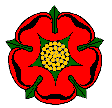 |
The Church of St James, Lostock Hall |
 |
The part of Cuerden Green now known as Lostock Hall came into being and grew rapidly during the reign of Queen Victoria. The Methodists were the first to realise that this new community would welcome the opportunity to worship in a nearby chapel, and so what is now known as the Watkin Lane United Methodist Church was constructed mid-century. Roman Catholics had recourse to Saint Mary, Bamber Bridge, while Anglicans had a choice of worshipping at Saint Paul's in Farington Moss or Saint Saviour's in Bamber Bridge. Towards the end of the nineteenth century it was realised that there was a need for these latter two religions to bring their ministrations closer to their congregations in Lostock Hall and Tardy Gate. The Roman Catholics built a school room which doubled as a chapel, and Masses were held there from 1891 onwards until Our Lady & Saint Gerard's Church was opened in 1913. Similarly in 1891, the Anglicans decided that the parish of Saint Saviour's needed to create an outreach to the Lostock Hall area by building a Mission Church.
Plans were made at a meeting in February, 1890; the foundation stone was laid on 6 June, 1891; and Saint James' church, costing £1450, was built quite quickly and opened over the weekend of 6/7 February 1892. The licence to perform Divine Service was granted on 25 April 1892.
A Mission Church, by definition, is one without a resident priest, and this is how it began for a short while, with a succession of clergy and readers taking turns to conduct services in the newly built edifice. Sixteen months after opening, the first regular minister arrived in the shape of a lay reader, Mr. John Heslop.
At the outset it was intended that St. James' Church would be used not only for religious but also for secular activities. The original plans indicate that the nave would double as a school room', with provision to isolate the chancel by some form of 'revolving shutter'; the vestry would act as a 'classroom'; and the small store room would house a 'lavatory'. Between 1896 and 1904, the building was in fact used as an infant school, but when it emerged, in 1902, that responsibility for education would be shouldered by a government inspired Local Education Authority, the school was destined for closure.
Even so, the church building was utilised throughout the week by the many church groups and organisations existing at that time, and could become quite crowded, so when a new curate arrived in 1906, plans were made to construct a purpose built hall alongside the church. The foundation stone was laid on 16 November 1907, and it was brought into use a few months later.
There was also need to find accommodation for the succession of curates looking after Saint James' under the aegis of Saint Saviour's. In 1903 a Building Committee commissioned a Preston builder to construct Wesley House on Watkin Lane, which was made ready for occupation by the year end. It was used as a vicarage until 1930 when it was sold on the grounds that it was unnecessarily large for its purpose. Anyway, Saint James' was now replete with its church, church hall and vicarage, but the cost would not be reimbursed till 1918.
World Wars 1 and 2 came and went, with memorials installed to record the names of those lost and served from the parish.
Saint James' had been a mission church for long enough, and it was time to be transformed into a parish in its own right. It became what is known as a Conventional District (a parish in the making) in 1951 and was licensed to conduct its own marriage services. In 1957 the Bishop of Blackburn came to lead the consecration service, signalling the advance to parish status.
This new responsibility for its own welfare set in motion a long list of improvements, the most obvious change being a complete renovation of the church hall, which more or less doubled its size. A new vicarage was built on Brownedge Road in 1962. Stained glass windows were installed in church in 1970/1 and 1983. In 1985, a new pipe organ was fitted.
The year 1991 brought along the Saint James' Centenary celebrations, which proved to all and sundry that the church was fully alive and well, and suitably prepared to continue its mission forward into the future.
In 1995, the government passed the 'Disability Discrimination Act', which called for various measures to be implemented to aid disadvantaged people, mostly affecting the interior of the church and the church hall, but it did make one conspicuous change to the church exterior. In 2005 a walled ramp jutting out into the churchyard was added to circumvent the few steps leading to the entrance porch.
On 13 February 2003 the vicar was additionally appointed to the post of Priest-in-Charge of Saint Paul's, Farington Moss.
JW :2007
From the church website
 | |
Photograph supplied by and © of Brian Young |
 | |
Photograph supplied by and © of Brian Young |
| Walton-le-Dale Home & Contents | ©Lancashire OnLine Parish Clerks | Lancashire Home |